Hello steemians and welcome to my blog once again! The title might be too cliché, I know, but my trolls came back from the moon so excited last month, that they decided to leave the Earth again to explore the rest of our solar system. So, before their new journey begins, I thought I should give you some of the basics just to get you in the right...atmosphere! :P
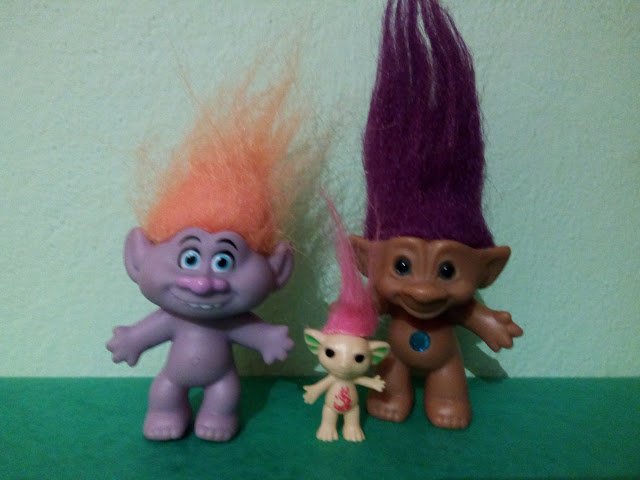
Image by @ruth-girl
Follow the pictures for a more "digestible" approach:

Any star can form a star system with all the objects that are gravitationally bound to orb around it. Planets, moons, asteroids, meteoroids and comets, they all revolve around the star in the center. There can also be solar systems with two (binary) or even more stars (multi-star). [source]
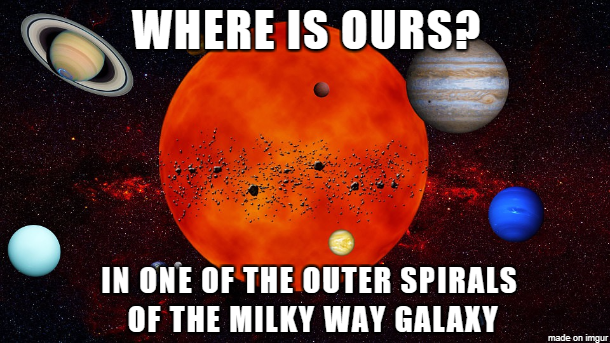
Galaxies are huge bodies that assimilate solar systems. They are categorized according to their shapes as lenticular, elliptical and spiral. Our galaxy, the Milky Way, is a spiral one. [source] Our solar system is located in the Orion Arm, 26,000 light years away from the center of the Milky Way galaxy. [source]

At a rough guess our solar system is about 4.6 billion years old.
Interesting fact: When the primary cloud began to cool down formed masses rich in calcium and aluminum. This hypothesis was recently confirmed, 40 years after the first meteorite rich in the above elements was studied (in 1969). [source]
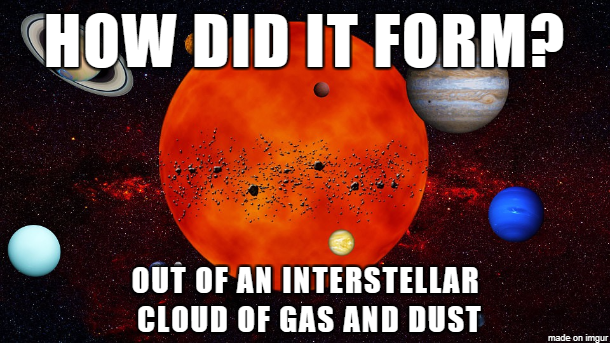
Gravitational forces within the dust and gas cloud made it spin around too fast until it finally collapsed under its own gravity. Our Sun took most (99%) of the matter and formed in the center. The rest of the planets and other orbiting objects were formed from the material left, with the greatest amount taken by Jupiter and Saturn.
The four smaller inner planets are mostly rocky and metallic in their essence (Mercury, Venus, Earth and Mars), whereas the next two (Jupiter and Saturn) are gas giants made of hydrogen and helium. The last two (Uranus and Neptune) are ice giants composed of water, ammonia and methane. [source]
In case you want to check it out again, here's a past post of mine on how stars are born.
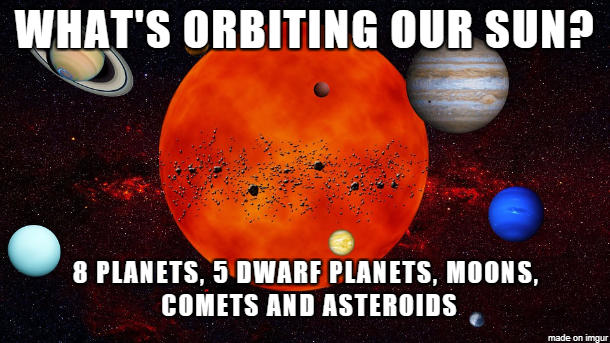
Our solar system comprises of eight planets (Mercury, Venus, Earth, Mars, Jupiter, Saturn, Uranus and Neptune). Five dwarf planets (Eris, Pluto, Haumea, Makemake and Ceres) [source]. Lots of moons, comets and asteroids.
Let's take a look at what all these names mean:
Planet according to the International Astronomical Union is an object that:
orbits the sun, has sufficient mass to be round (or nearly round), is not a satellite (moon) of another object and has removed debris and small objects from the area around its orbit [source]
Dwarf planet is a planet that hasn't got rid of the debris and small objects around its orbiting area. [source]
Moon is any natural satellite orbiting around a planet, dwarf planet or other celestial body. [source]
Comets are huge lumps of frozen gases, rock and dust. [source]
Asteroids are rocks too small to be considered as planets and orbit the sun. [source]
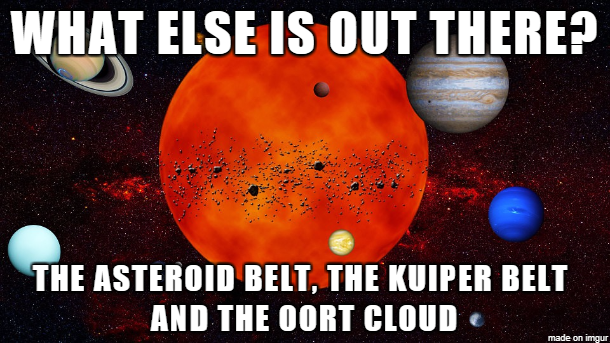
There are three more zones in our solar system. The first one is the asteroid belt, it lies between Mars and Jupiter. There you will find objects made of rock and metal (like Guns and Roses, HIM, Metallica and Pantera). [source] The Kuiper belt lies beyond Neptune and it's where dwarf planet Pluto lives. It's a freezing cold place where frozen objects live. And further than the Kuiper belt you will find the Oort cloud, the probable source of comets. The Oort cloud is a place where frozen cosmic debris lies and the limit of the sun's gravitational field. [source]
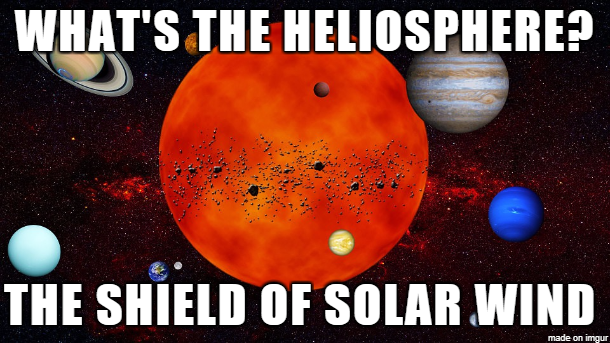
The heliosphere is kind of a solar bubble-like shield created by the sun's emitting plasma, the solar wind. It does not have the shape of a perfect sphere and extends for about 80-100 astronomical units (where 1 AU equals 150 million kilometers). The limit where the solar wind is pressed by interstellar gases and suddenly stops is called the termination shock. [source]
Well, after all that do you feel ready to follow my trolls on a tour of the eight planets and other wonders of our solar system? I can't wait to see which planet they're visiting first and what new things they're going to teach us!
(Original meme image from: pixabay.com)

Thank you for being here and reading this. If you like my writing, you can visit my blog for more ;)
This week's posts:
* TIL - World Trade Center 7
* Short Story - Where Do People Go When They Die
* A Taste Of Sweden (Part 3 - Stockholm Aquaria)
* Bizarre Natural Phenomena Vol.33 - Barbie's Lake (Australian Lake Hillier)
* Atopic Dermatitis - The Bummer!
Special thanks and mentions:

Until my next post,
Steem on and keep smiling, people!

